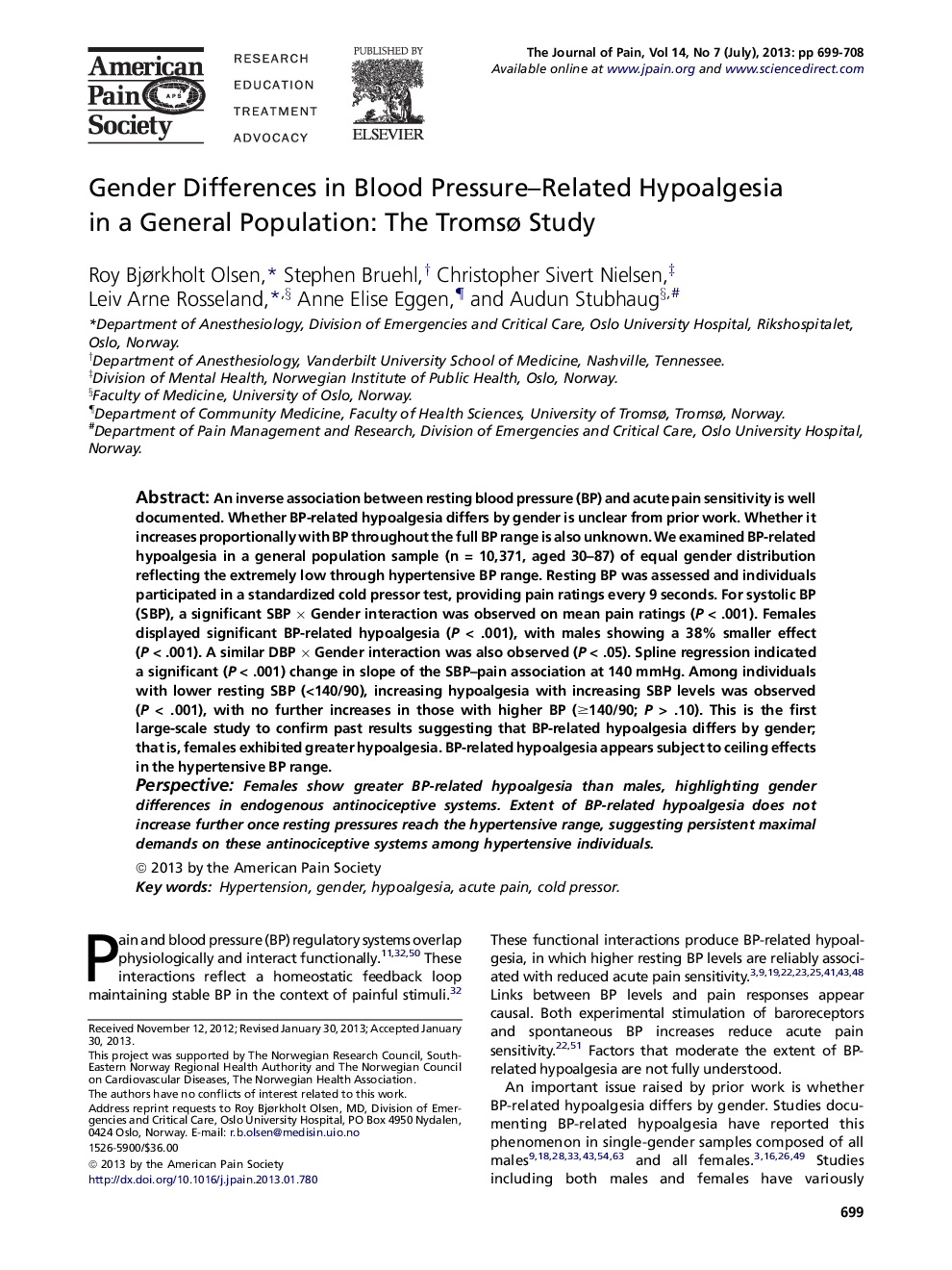| Article ID | Journal | Published Year | Pages | File Type |
|---|---|---|---|---|
| 2723026 | The Journal of Pain | 2013 | 10 Pages |
An inverse association between resting blood pressure (BP) and acute pain sensitivity is well documented. Whether BP-related hypoalgesia differs by gender is unclear from prior work. Whether it increases proportionally with BP throughout the full BP range is also unknown. We examined BP-related hypoalgesia in a general population sample (n = 10,371, aged 30–87) of equal gender distribution reflecting the extremely low through hypertensive BP range. Resting BP was assessed and individuals participated in a standardized cold pressor test, providing pain ratings every 9 seconds. For systolic BP (SBP), a significant SBP × Gender interaction was observed on mean pain ratings (P < .001). Females displayed significant BP-related hypoalgesia (P < .001), with males showing a 38% smaller effect (P < .001). A similar DBP × Gender interaction was also observed (P < .05). Spline regression indicated a significant (P < .001) change in slope of the SBP–pain association at 140 mmHg. Among individuals with lower resting SBP (<140/90), increasing hypoalgesia with increasing SBP levels was observed (P < .001), with no further increases in those with higher BP (≥140/90; P > .10). This is the first large-scale study to confirm past results suggesting that BP-related hypoalgesia differs by gender; that is, females exhibited greater hypoalgesia. BP-related hypoalgesia appears subject to ceiling effects in the hypertensive BP range.PerspectiveFemales show greater BP-related hypoalgesia than males, highlighting gender differences in endogenous antinociceptive systems. Extent of BP-related hypoalgesia does not increase further once resting pressures reach the hypertensive range, suggesting persistent maximal demands on these antinociceptive systems among hypertensive individuals.
